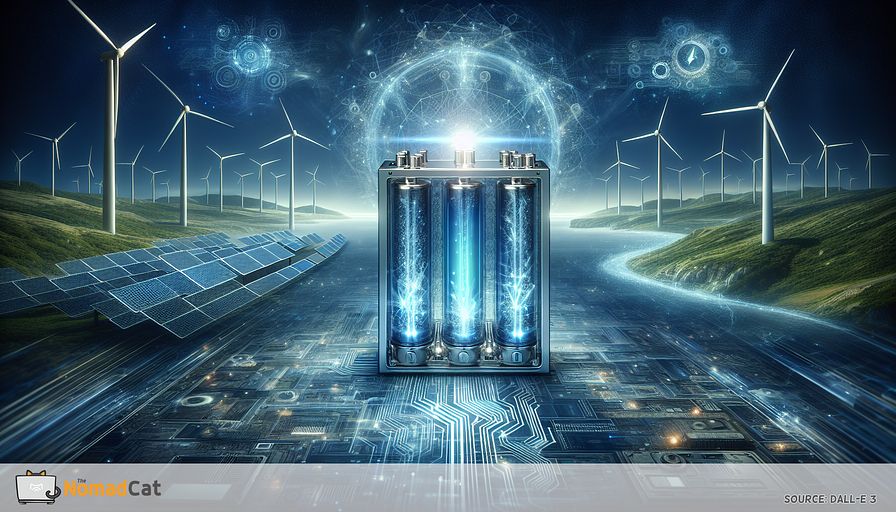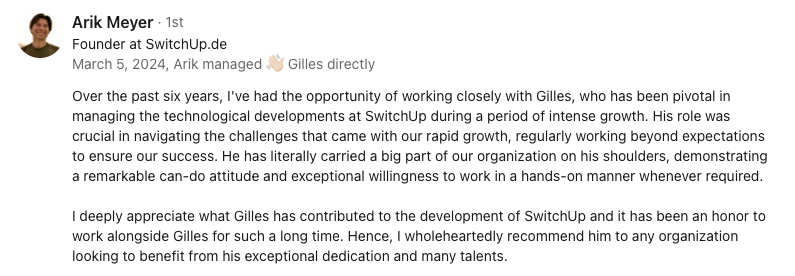Abstract:
With the global shift towards renewable energy sources, the importance of innovative energy storage solutions cannot be overstated. This article delves into the latest advancements in energy storage technologies, focusing on their critical role in enhancing the reliability and efficiency of renewable energy systems. It highlights breakthroughs in battery technology, including solid-state and lithium-sulfur batteries, that offer higher energy density and longer lifespans. Moreover, the piece examines emerging trends such as the integration of energy storage with smart grid technologies, enabling more resilient and flexible power networks. This exploration not only showcases the potential of these technologies to transform the energy landscape but also underscores the opportunities and challenges they present for industry leaders. As companies strive to meet increasing demands for sustainable and reliable energy, staying ahead in the energy storage sector becomes crucial for achieving these goals.
Introduction to energy storage breakthroughs
With the world steadily moving towards renewable energy sources like solar and wind, the need for efficient storage solutions has become more critical than ever. Renewable technologies offer tremendous potential to reduce carbon footprints, but their intermittent nature poses significant challenges. The key to bridging this gap is innovative energy storage systems, which can ensure that energy generated from renewables is efficiently stored and made available when needed.
Imagine harnessing the full power of the sun on a cloudy day or ensuring a seamless energy supply throughout the night using wind energy stored during breezy afternoons. This vision is driving the quest for groundbreaking advancements in energy storage technologies. In this piece, we'll explore crucial breakthroughs in battery technology, such as solid-state and lithium-sulfur batteries, their integration with smart grid technologies, and the opportunities and challenges these innovations present for industry leaders. The future of energy storage is not just promising; it's already altering the energy landscape. Get ready to journey through these transformative innovations.
The critical role of energy storage
Energy storage is essential for the reliability and efficiency of renewable energy systems. Without effective storage solutions, the benefits of solar, wind, and other renewable sources cannot be fully realized. Renewable energy generation is often unpredictable; the sun doesn't always shine, and the wind doesn't consistently blow. This variability can lead to mismatches between energy supply and demand, potentially destabilizing the grid.
Proper energy storage solutions can mitigate these issues by capturing excess energy when production outstrips consumption and releasing it during periods of high demand. This not only enhances grid stability but also maximizes the utilization of renewable resources. Storage systems allow for the seamless integration of renewables into traditional power grids, fostering a more resilient and adaptive energy infrastructure.
Innovation in energy storage technology is pivotal. Current advancements are not merely about storing electricity but also about improving the ease with which this energy can be accessed and used. Efficient storage systems support the transition to more sustainable energy practices and help combat climate change by reducing reliance on fossil fuels. By focusing on energy storage, we enable a future where renewable energy can reliably meet the world's energy demands, regardless of when or where it is generated.
Breakthrough in battery technology: solid-state batteries
Solid-state batteries are making waves in the energy sector, promising to revolutionize how we store and use electricity. Unlike traditional lithium-ion batteries, which utilize liquid electrolytes, solid-state batteries employ solid electrolytes. This fundamental shift brings several noteworthy advantages, starting with significantly higher energy densities. Solid-state batteries can store more energy in the same amount of space, making them an ideal candidate for applications in electric vehicles and portable electronics.
One of the standout features of solid-state batteries is their extended lifespan. Traditional batteries degrade over time due to the liquid electrolyte gradually wearing out. In contrast, the solid electrolyte in solid-state batteries is less prone to these wear-and-tear issues, resulting in a longer-lasting battery. For instance, some studies demonstrate that solid-state batteries can achieve up to a 50% increase in lifecycle compared to conventional batteries, breaking new ground in durability and efficiency.
Safety is another area where solid-state batteries excel. The liquid electrolytes in existing batteries are often flammable and can pose fire risks, especially in high-stress situations. Solid electrolytes mitigate this risk, providing a safer and more stable energy storage solution. This added safety is particularly crucial in electric vehicles, where battery reliability is paramount.
Real-world applications and data points
- Electric vehicles (EVs): Companies like Toyota and BMW are actively investing in solid-state battery technology to enhance the range and safety of their EVs. These companies aim to launch vehicles with solid-state batteries by the mid-2020s.
- Consumer electronics: Innovations are also spilling over into consumer electronics. Solid-state batteries promise slimmer, more efficient devices with longer battery life, which can significantly enhance user experience.
- Energy density metrics: Solid-state batteries can achieve energy densities of up to 500 Wh/kg, a substantial improvement over the 250-300 Wh/kg typically seen in lithium-ion batteries.
As these examples demonstrate, the potential impact of solid-state batteries on the energy landscape is immense. By enhancing energy density, extending battery life, and improving safety, solid-state technology is set to play a pivotal role in the future of energy storage, making our electric vehicles and devices more efficient and reliable.
The promise of lithium-sulfur batteries
Lithium-sulfur batteries are emerging as a formidable contender in the energy storage arena, offering intriguing possibilities for both efficiency and sustainability. These batteries stand out primarily due to their high storage capacity, a notable advantage over conventional lithium-ion counterparts. Lithium-sulfur batteries can potentially store up to five times more energy than lithium-ion batteries of the same weight, which bodes well for applications demanding significant power, such as electric vehicles and large-scale renewable energy storage systems.
Ongoing research is intensely focused on overcoming the current hurdles to commercial viability. Major challenges include enhancing the lifespan of lithium-sulfur batteries and addressing issues related to the shuttle effect, a phenomenon where polysulfides dissolve in the electrolyte, leading to reduced performance over time. Developments in nanotechnology and material science are promising avenues for mitigating these issues and bringing lithium-sulfur batteries closer to widespread adoption.
Potential applications and advantages
- Electric vehicles (EVs): The high energy density of lithium-sulfur batteries could significantly extend the range of EVs while reducing the total battery volume and weight. This not only improves vehicle efficiency but also potentially lowers manufacturing costs.
- Renewable energy systems: Their ability to store large amounts of energy makes them ideal for managing the intermittency of renewable sources like solar and wind. By efficiently capturing and releasing energy, lithium-sulfur batteries can enhance grid stability and reliability.
- Consumer electronics: Lighter and more powerful batteries can revolutionize gadgets by offering longer usage times without increasing the device size, promising a significant upgrade for smartphones, laptops, and other portable devices.
The impact of lithium-sulfur batteries on renewable energy systems cannot be overstated. By providing a solution to large-scale energy storage, they could facilitate greater reliance on renewable sources, accelerating the shift away from fossil fuels. As researchers continue to make strides in improving their practicality and durability, lithium-sulfur batteries hold the promise of becoming a cornerstone technology in the sustainable energy landscape.
Integration with smart grid technologies
Integrating energy storage solutions with smart grid technologies paves the way for more robust and adaptive power networks. Smart grids are advanced electrical systems that use information and communication technologies to manage electricity flow efficiently. When paired with storage solutions, these intelligent grids can dynamically balance supply and demand, significantly enhancing grid stability.
One prominent example of this integration is the deployment of battery storage systems in conjunction with smart grids. By storing excess energy generated during peak production times and releasing it during high demand periods, these systems prevent energy wastage and ensure a consistent power supply. This mechanism is especially beneficial for incorporating renewable sources like solar and wind, whose output can be highly variable.
Current implementations
- Residential energy systems: Companies like Tesla with their Powerwall are offering household battery solutions that work seamlessly with smart meters. These solutions can automatically optimize energy usage based on real-time electricity rates and consumption patterns.
- Utility-scale projects: On a larger scale, utilities are deploying massive battery banks, such as the Hornsdale Power Reserve in South Australia, which uses a combination of storage and smart grid technology to provide grid stability and emergency backup power.
- Microgrids: In remote locations, microgrids equipped with storage systems and smart controllers can operate independently of the central grid, offering reliable electricity in areas where it might otherwise be erratic or nonexistent.
The benefits of this integration are manifold. It enhances energy reliability, improves efficiency, and supports the broader adoption of renewable energy. However, several challenges remain. The high initial costs of installing smart storage solutions, cybersecurity risks, and the technical complexity of integrating diverse systems need to be addressed. Despite these hurdles, the synergy between storage solutions and smart grids represents a significant leap toward a more sustainable and dependable energy future.
opportunities and challenges for industry leaders
The breakthroughs in energy storage technologies present significant opportunities for industry leaders, but they also come with a unique set of challenges. The competitive landscape is rapidly shifting as companies race to develop and adopt advanced storage solutions. Being at the forefront of this technological evolution could provide a substantial edge in the market, allowing companies to capitalize on the increasing demand for sustainable energy systems.
On the opportunity side, investing in research and development is crucial. Firms that allocate resources to innovate and improve energy storage technologies can benefit from a leading position in the market. This proactive approach not only enhances their product portfolios but also solidifies their reputation as pioneers in sustainable energy. For instance, those who succeed in developing superior battery technologies like solid-state or lithium-sulfur batteries can potentially dominate sectors such as electric vehicles and renewable energy storage.
investment and competitive landscape
- Research and Development: Allocating significant funds towards R&D can spur innovation, resulting in more efficient and cost-effective storage solutions. This is essential for maintaining a competitive edge.
- Market Positioning: Early adopters of advanced storage technologies can attract new customers and retain existing ones by offering cutting-edge solutions, thus gaining a larger market share.
- Partnerships: Collaborations with research institutions, universities, and other companies can accelerate technological advancements and reduce costs.
However, challenges abound as well. The high initial costs associated with developing and deploying new storage technologies can be a significant barrier. Additionally, the rapid pace of technological change necessitates continuous investment and innovation to stay relevant. Companies must also navigate regulatory landscapes that vary across regions, ensuring compliance while advocating for favorable policies.
key challenges
- High Development Costs: The initial investment required for developing new technologies can be daunting, potentially limiting participation to well-funded companies.
- Regulatory Hurdles: Navigating different regulatory environments and ensuring compliance adds complexity to the deployment of new technologies.
- Technological Obsolescence: With rapid advancements, there’s a risk that current investments might quickly become outdated, necessitating further continuous innovation.
For industry leaders, the key to navigating these opportunities and challenges lies in striking a balance between innovation and strategic planning. Staying ahead requires not only investing in cutting-edge research but also being adaptable to market and regulatory changes. By doing so, companies can continue to drive the energy sector towards a more sustainable and efficient future.
future of energy storage technologies
The advancements in energy storage, such as solid-state and lithium-sulfur batteries, hold remarkable promise for reshaping the energy sector. These cutting-edge technologies offer higher energy density, extended lifespans, and improved safety, making them integral to the transition towards sustainable and reliable power systems. Their integration with smart grid technologies further enhances energy management, ensuring a more resilient grid.
Continued innovation in this field is paramount. As research pushes the boundaries of what’s possible, the potential for more efficient, cost-effective, and sustainable energy solutions grows. Industry leaders, researchers, and policymakers must collaborate to overcome existing challenges, such as high development costs and regulatory complexities, to unlock the full potential of these breakthroughs.
Ultimately, the future of energy storage technologies is bright. With persistent dedication to research and development, these advancements will play a crucial role in meeting global energy demands, reducing carbon footprints, and fostering a more sustainable and secure energy landscape. The journey towards a greener future is well on its way, driven by the dynamic evolution of energy storage innovations.














